Wing Commander Maurice Conly was the first and only official artist appointed by the Royal New Zealand Air Force (RNZAF) and we hold much of his work in our collection. “Send for the Artist…” is his story, as narrated to and written by Squadron Leader Paul Harrison, RNZAF.
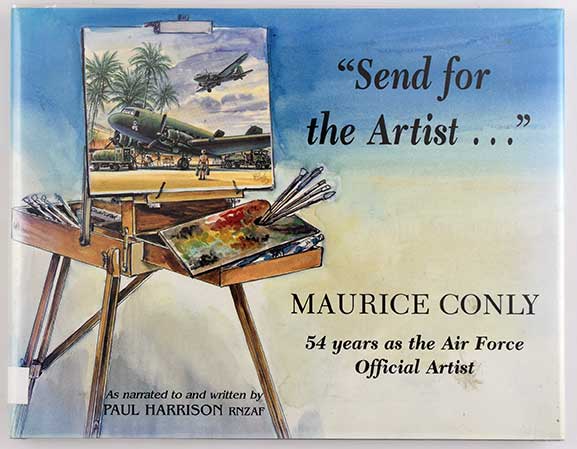
Carefully (!) leaf through the pages of our archived issues of Contact magazine or various illustrated books in our Reading Room, and you’re sure to find the work of Wing Commander Maurice Conly.
The first and only Official Artist for the Royal New Zealand Air Force (RNZAF), he produced an impressive body of artwork for the RNZAF over more than 50 years, and also had a successful career in commercial design. In fact, it was Maurice Conly who designed our New Zealand one and two dollar coins!
In 1995, Maurice narrated his memories to Squadron Leader Paul Harrison, and together they compiled “Send for the Artist…” Maurice Conly: 54 years as the Air Force Official Artist. This collection of reminiscences spans the artist’s long career in the RNZAF, but also features two additional chapters by Bill Mitchell and Brian Vincent on Maurice Conly’s contributions to New Zealand coin and philatelic (postage stamp) design, respectively.
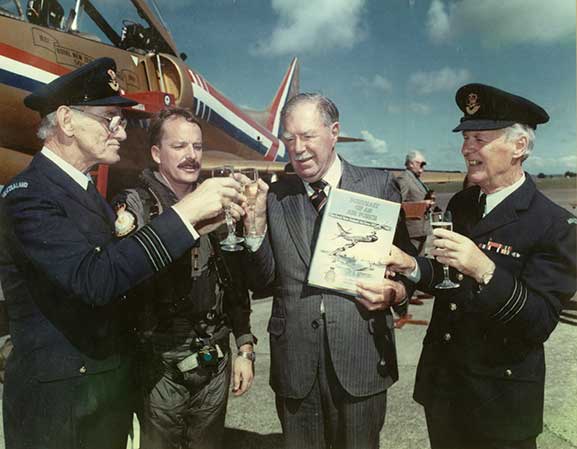
Chasing childhood dreams
Maurice trained as a commercial artist at King Edward Technical College in Dunedin before enlisting in the Air Force in 1941. By the time he was called up, the RNZAF was still only four years old, but had expanded to a force of 10,597 following the outbreak of World War Two. [1]
With twin passions for aviation and drawing aircraft, it appeared as though Maurice would leave his art behind to pursue his dream of becoming a pilot. First undergoing ground training at Levin and then flying training at Taieri, he went solo on 25 April 1941.
But a month later disaster struck. Making a rapid descent from altitude during a standard exercise in a Tiger Moth, Maurice experienced severe pains in his ears, which persisted throughout that day:
‘A visit to the medical officer confirmed that I had burst eardrums, a not uncommon ailment among student pilots. However, in my case, despite expert care given at the station hospital, there was no progress in curing the problem. My pilot days were over.’ [2]
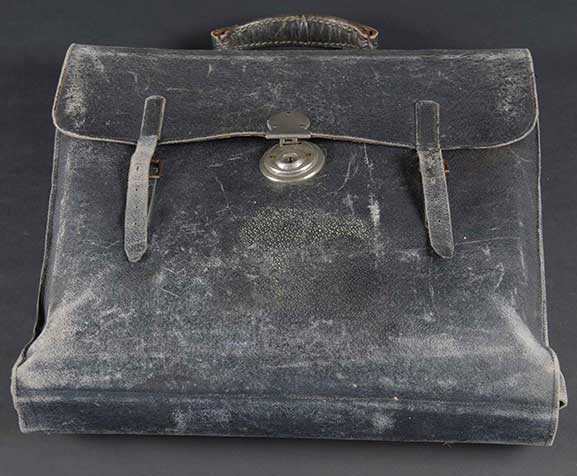
An alternative RNZAF career
Declared unfit to continue flying, Maurice underwent a convalescent period back at Levin. He was tested in the first decompression chamber imported to New Zealand but did not pass the tests. Looking for a way to fill his time, Maurice approached the newly established office of the RNZAF’s wartime magazine, Contact and joined the staff later that same year. He went on to produce all the major artwork for this publication, including the cover illustrations, like the one pictured here.
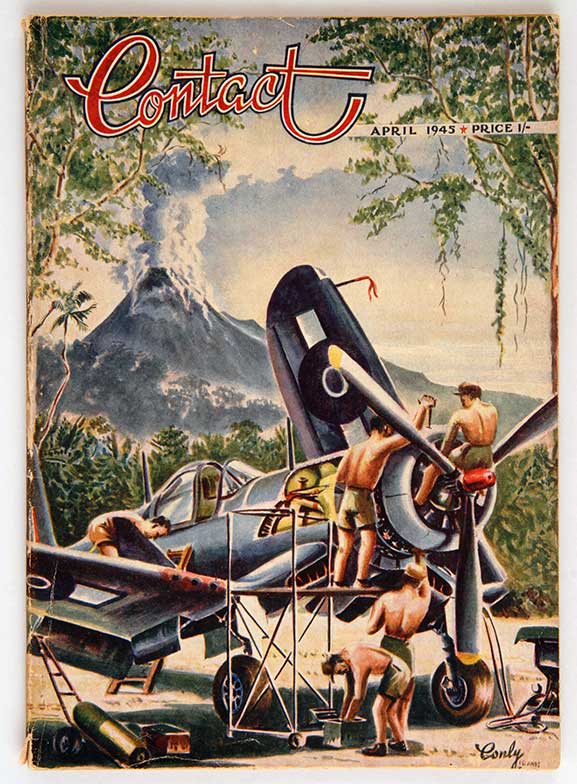
After he was appointed Official Artist to the RNZAF, Maurice travelled throughout New Zealand recording the wartime life and work of the Air Force. And so, despite not becoming a pilot, he was to experience much of the RNZAF’s activities after all – from Fiji and the Solomon Islands to Singapore, Malaysia, Vietnam, Antarctica and London. Wherever the RNZAF was serving, the Official Artist went with them.
In 1944 Maurice was sent to the Solomon and Admiralty Islands in the Pacific theatre, where he produced many watercolours and sketches of the wartime RNZAF in the field.
While overall, Maurice Conly’s work can be said to be more illustrative than interpretive, here are a couple of examples of his informal sketches, made while in the Islands.


These sketches recorded Maurice Conly’s impressions of the things he saw and the people he met, such as the island chief who went around wearing a military uniform shirt that he had acquired, or shot-up Japanese floatplanes.
Some of these impressionistic sketches provided inspiration for further paintings when he returned home to New Zealand, while the rest became a kind of “artist’s diary” forming part of his overall folio.
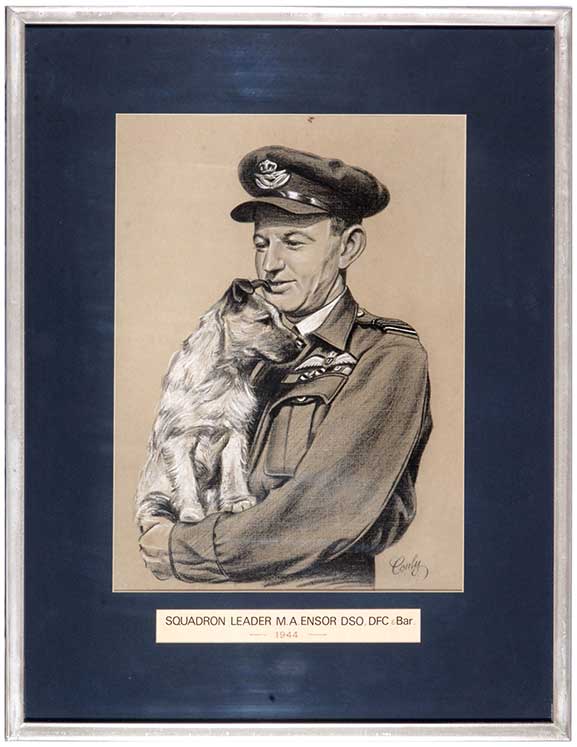
Another important aspect of Maurice Conly’s work was the production of formal portraits of RNZAF and other personnel. Many of the portraits he produced were based on photographs, but he often enhanced them with background detail such as palm trees or aircraft adding context to the time and place. Other portraits, usually of well-known individuals such as this portrait of Wing Commander Ensor, were produced for Contact magazine and other publications.
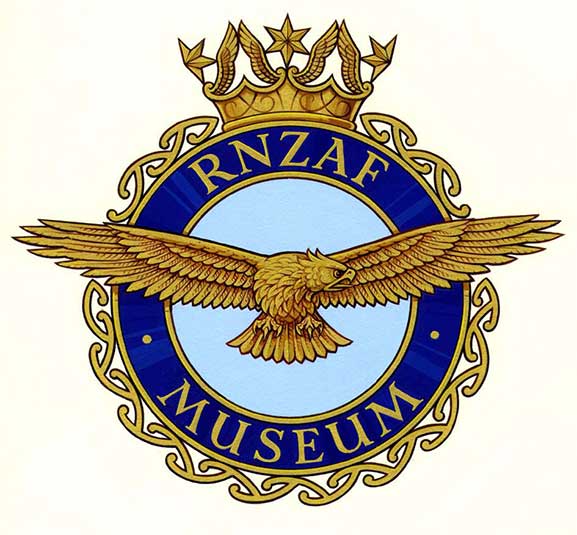
Fundraising for our Air Force Museum
We can’t discuss Maurice Conly’s work without acknowledging the significant role he played in the creation of the Air Force Museum of New Zealand. As part of the fundraising team, the artist produced display backgrounds, brochures and concept art for what the museum could look like.
A series of historical paintings were also commissioned and sold as prints to raise funds, but it was the collectible RNZAF commemorative covers Maurice designed that became a major focus of his work in the late 1980s and 1990s. And as fundraising efforts for the new museum intensified, ‘The degree of income derived from sales of the commemorative covers was considerable and soon became the third-highest source of revenue for the museum.’ [3]
References
[1] Paul Harrison with Maurice Conly, “Send for the Artist…” Maurice Conly: 54 years as the Air Force Official Artist, Random House New Zealand (Auckland) 1995, p.13
[2] Harrison and Conly, “Send for the Artist…”, p.31
[3] Harrison and Conly, “Send for the Artist…”, p.165
Our Reading Room is open to the public by appointment. Please contact the Research Team at research@airforcemuseum.co.nz to book your visit.



